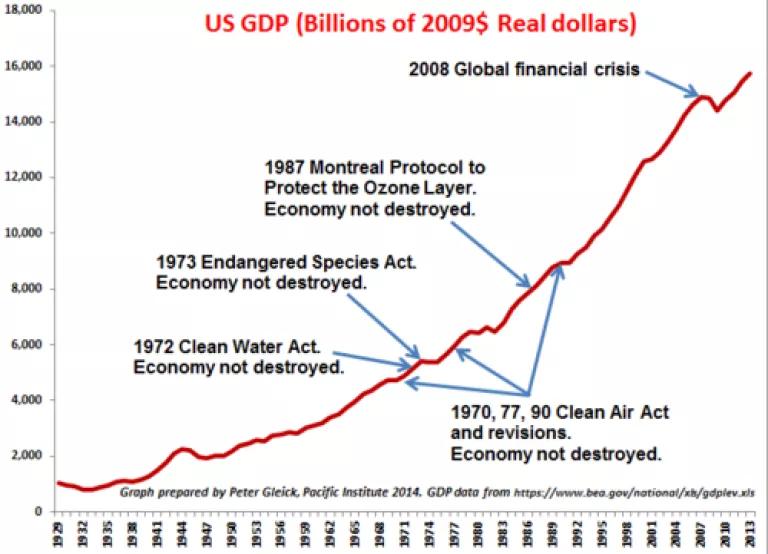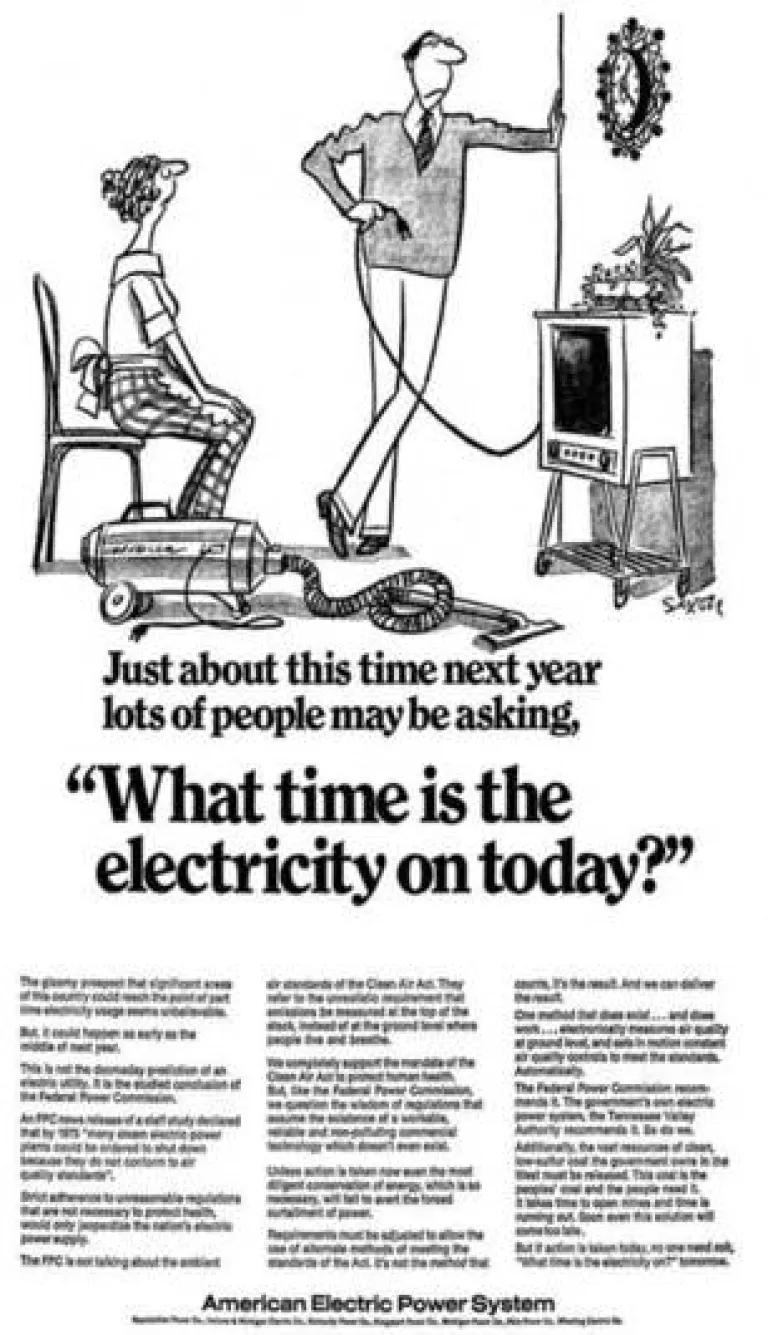There They Go Again: Industry Responds to Proposed Carbon Standards with Same Old Arguments
Catastrophe. Massive difficulties. Nobody knows how to do it.
Those were the protests of auto industry executives, arguing against catalytic converters, seatbelts and fuel efficiency standards.
We will see shutdowns. Adverse effects on the national economy. The science is uncertain.
This is how industry representatives argued against phasing out ozone-killing CFCs, taking poisonous lead out of gasoline and scrubbing acid-rain-causing pollutants out of power plant smokestacks.
Cigarettes do not cause cancer.
We’ve all heard this before. And we’re hearing it again now, as industry groups and their allies trot out the same old tired arguments in response to the Environmental Protection Agency’s proposed new standards on carbon pollution from power plants, which the agency released on June 2. Many of the distorted claims about job loss and high energy bills are based on a discredited Chamber of Commerce report, which just received the maximum “Four Pinocchio” falsehood rating from the Washington Post. Polluters have been using the same disinformation tactics for 40 years to fight life-saving standards, which end up being some of the most cost-effective and powerfully protective measures on the books.

To those who say new #climate rules will destroy the economy, here's how past claims worked out. (non-snarky vers.) pic.twitter.com/X9tHBUBlGJ
— Peter Gleick (@PeterGleick) June 3, 2014
Take acid rain, for example. Power companies claimed cutting sulfur dioxide and nitrous oxide pollution from power plants would be too costly, consumer prices would increase, and that the science was “ambiguous.” But the Clean Air Act cut acid rain by more than half with scrubbers and other new technology, and with cleaner fuels—at a fraction of the cost industry projected. Instead of costing $1500 per ton, as industry claimed, pollution allowances traded at $100 to $200 per ton for most of the program. Utility customers have benefited not just from cleaner air but also from lower electric bills in most states.
Getting toxic lead out of gasoline, the oil industry claimed, would cost a dollar a gallon. It turned out to cost just a penny a gallon to protect hundreds of thousands of kids from lead-induced brain damage. They said it couldn’t be done, but we did it—and not just in America. Today, thanks to a partnership spearheaded by NRDC, leaded gasoline has been virtually eliminated from the planet. This global threat to the health of millions of children is gone.
Industry also fought the phase-out of ozone-depleting CFCs in the 1990s, claiming it would cause “severe economic and social disruption.” The phase-out was so smooth it actually happened five years ahead of schedule, and at 30 percent of the cost industry predicted. Our ozone layer is healing, preventing nearly 300 million cases of non-melanoma skin cancer in America alone.
History shows us that standards spark innovation, new and better ways of doing things, better products, and more choices for consumers. Our air is cleaner, our cars go farther on a gallon of gas, our refrigerators cool more stuff using less energy than ever before—without any of the disastrous consequences predicted by industry hold-outs.

This American Electric Power ad from 1974 claims that electricity would have to be rationed because of Clean Air Act safeguards. (QuitCoal.org)
The EPA’s power plant proposal may be historic, but, in some ways, it doesn’t break new ground. Carbon pollution standards for power plants are simply the latest in a series of successful measures that have leveraged the power of innovation to cut harmful pollution and protect our health.
Industry groups will fight tooth and nail to protect their interests, armed with egregiously misleading ads and dubious analysis. But the American public has a different agenda—an urgent desire to curb the harmful impacts of climate change. An ABC News/Washington Post poll this week found that 70 percent of Americans support limits on carbon pollution from power plants. The EPA, in issuing its first-ever standards for carbon pollution from power plants, has the facts, history and public opinion on its side.
